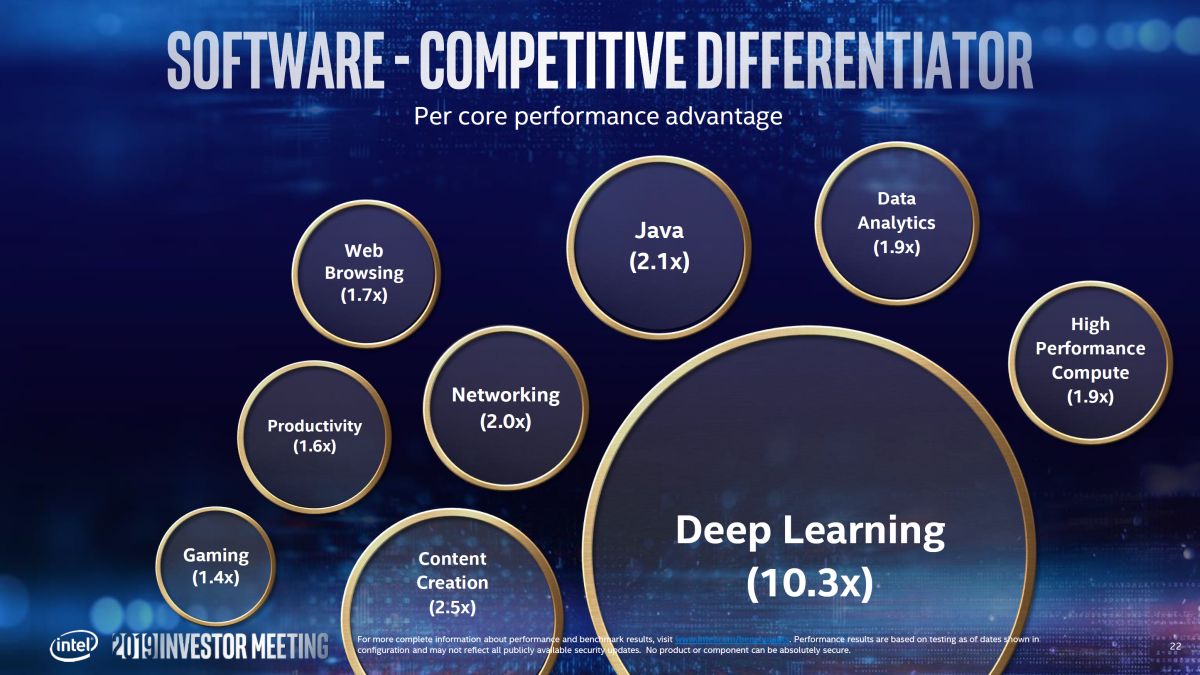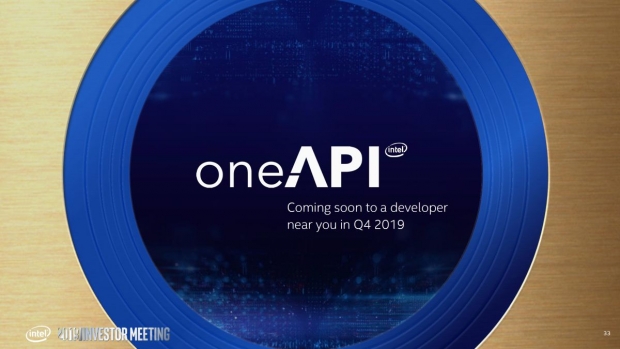Raja Koduri the Chief Architect, and SVP of Intel architecture, graphics and software, has presented the software leadership part of Intel’s long term roadmap. It was interesting that the software leadership team including some senior staff who are with Intel for more than 25 years said that this is the first time that Intel chose to talk to investors about software. Raja called it what it was, a huge change.
Intel jumped 6X in Java runtime performance between JDK 8 and JDK 9 and compared it with a few generations of Moore's Law hardware performance in one software release. Persistent memory complete stack optimization compared to an SSD raw hardware at the base level and Intel hardware and software at the other end managed to increase the performance by 8.1x times.
Deep learning jump by 28x
Raja’s favorite example is the deep learning boost where Intel engineers managed to increase 28x times with hardware and software compared to a 1x based level with hardware only. This is a mind-blowing example of how things can get faster as long as the company understands and optimizes for the workload. Intel's software team accomplished this improvement in 12 to 18 months in a data center world from Skylake to top Cascade lake hardware, and the 28x boost would not be possible without great software support.
The complexity of software behind hardware
For every magnitude of performance from new hardware, here is often >2 orders of magnitude unlocked by the software. Raja Koduri
The competitive software differentiator showed, and the graph showed impressive per core advancements including 10.3X in deep learning, 2X in networking, 2.5X in content creation, 2.1X in Java, 1.9 in data analytics, 1.9X in high performance compute, 1.7X in web browsing, 1.6X in productivity, and 1.4X in gaming. 
Raja mentioned that other companies are happy and write a press release when they optimize any of these vectors by 10 percent. We will leave it to your imagination which of those companies he had in mind.
With over 15,000 software engineers and modifying over half million lines of code each year, number one contributor to Linux kernel. A whopping 12 million developer ecosystem revolves around Intel software.
Strategy
Intel already said in December of 2018 that the future is in a diverse mix of Scalar, Vector, Matrix and Spacial architecture deployed in CPU, GPU, FPGA and Accelerator sockets.
The new API design goals included simple easy to use, open and one developer experience pillars and Raja was happy to report that OneAPI is scheduled to launch in Q4 2019.
Customers and developers have seen the specs and are excited about it, and Q4 2019 is the timeframe where developers get their hands on the OneAPI. The recent API efforts look like a huge step and advantage over the competition.




